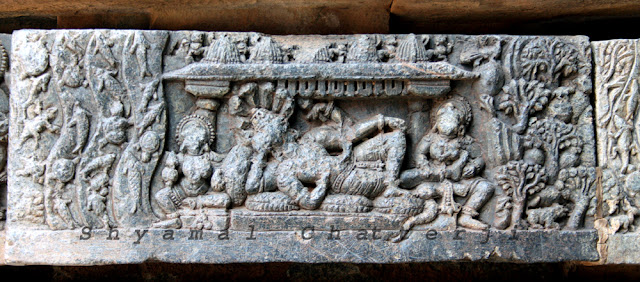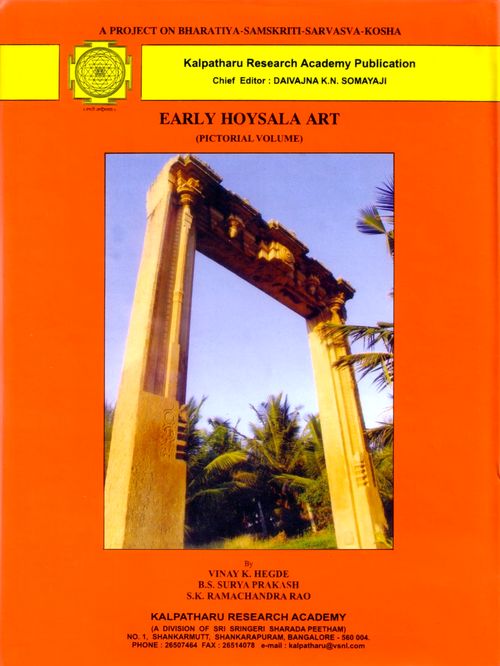AND THEIR CANDID MOMENTS !
A photo album published by my friend Kanad Sanyal during Durga Puja ,2011 had a very interesting subject - he took photos of photographers in Durga Puja pavilions. The photographers were seen mostly using mobile phones - outstretched hands holding their mobile phones in front of the eyes, raised a bit to have a good image of the the deity made a good study by Kanad.
Kanad's collection motivated me to capture photos of fellow-photographers in Puja pavilions in 2011 - what I got were not very presentable ! This year, I tried once more and met with partial satisfaction. But, most interesting ones were taken during visit to places of tourist interest.
During February,12 visit to Konarak, I was waiting to take a photo of the chlorite door frame of 'Jagmohan' without any tourist in the frame. Another person was seriously engaged in doing the same, except for that he was keen to have only his companion in the picture frame . I waited patiently for him to get a photo-frame of his choice and move away. Dissatisfied with his clicks, he kept on trying ! Slightly irritated because of waiting , I pointed my camera to capture the scene, which is here. If by any chance, these photos come to the notice of either of the persons mentioned in this anecdote, let me assure them - no offense meant.
During my visit to Belur/Halebid/Mysore in November,12, I found young men very fond of clicking photos of their friend/s - often more than that of the architecture/sculpture ! But, what I notice these days that clicking has become easier and therefore 'treasures' can be preserved for posterity ! Hope my young friends will maintain a good scrapbook to go back to.
The 'fun' element of these types of photographs can be fully obtained when the person/s in the photograph are not conscious. I am learning the tricks of candid photography. I shall end with an anecdote on my learning curve. This February,12, when we were at Konark, I found four young men ogling at a wall-relief in a niche , one of them was having a mobile/camera in his hand. As soon as one of this group found me focusing my camera, two broke away. Here is a photo of the couple which the group's attention and two friends who stayed back to brave my clicking.
I dedicate this blog to Kanad Sanyal. Look forward to many more of such candid moments.
Before closing, let me assure once more all the persons in this blog - I intend no offense.
A photo album published by my friend Kanad Sanyal during Durga Puja ,2011 had a very interesting subject - he took photos of photographers in Durga Puja pavilions. The photographers were seen mostly using mobile phones - outstretched hands holding their mobile phones in front of the eyes, raised a bit to have a good image of the the deity made a good study by Kanad.
Kanad's collection motivated me to capture photos of fellow-photographers in Puja pavilions in 2011 - what I got were not very presentable ! This year, I tried once more and met with partial satisfaction. But, most interesting ones were taken during visit to places of tourist interest.
Patient photographer,awaits the umbrella to move away.
Udayan Sangha, Naktala.Puja - 2012.
During February,12 visit to Konarak, I was waiting to take a photo of the chlorite door frame of 'Jagmohan' without any tourist in the frame. Another person was seriously engaged in doing the same, except for that he was keen to have only his companion in the picture frame . I waited patiently for him to get a photo-frame of his choice and move away. Dissatisfied with his clicks, he kept on trying ! Slightly irritated because of waiting , I pointed my camera to capture the scene, which is here. If by any chance, these photos come to the notice of either of the persons mentioned in this anecdote, let me assure them - no offense meant.
Waiting for a crowd-free frame to capture his friend against
Door-frame, Jagmohan, Konarak.
During my visit to Belur/Halebid/Mysore in November,12, I found young men very fond of clicking photos of their friend/s - often more than that of the architecture/sculpture ! But, what I notice these days that clicking has become easier and therefore 'treasures' can be preserved for posterity ! Hope my young friends will maintain a good scrapbook to go back to.
Capturing 'legs' !!
In front of Ravana, Chamundi hills,Mysore.
Here is an exception :
Kesava temple, Somnathpura.
The 'fun' element of these types of photographs can be fully obtained when the person/s in the photograph are not conscious. I am learning the tricks of candid photography. I shall end with an anecdote on my learning curve. This February,12, when we were at Konark, I found four young men ogling at a wall-relief in a niche , one of them was having a mobile/camera in his hand. As soon as one of this group found me focusing my camera, two broke away. Here is a photo of the couple which the group's attention and two friends who stayed back to brave my clicking.
I dedicate this blog to Kanad Sanyal. Look forward to many more of such candid moments.
Before closing, let me assure once more all the persons in this blog - I intend no offense.



















































